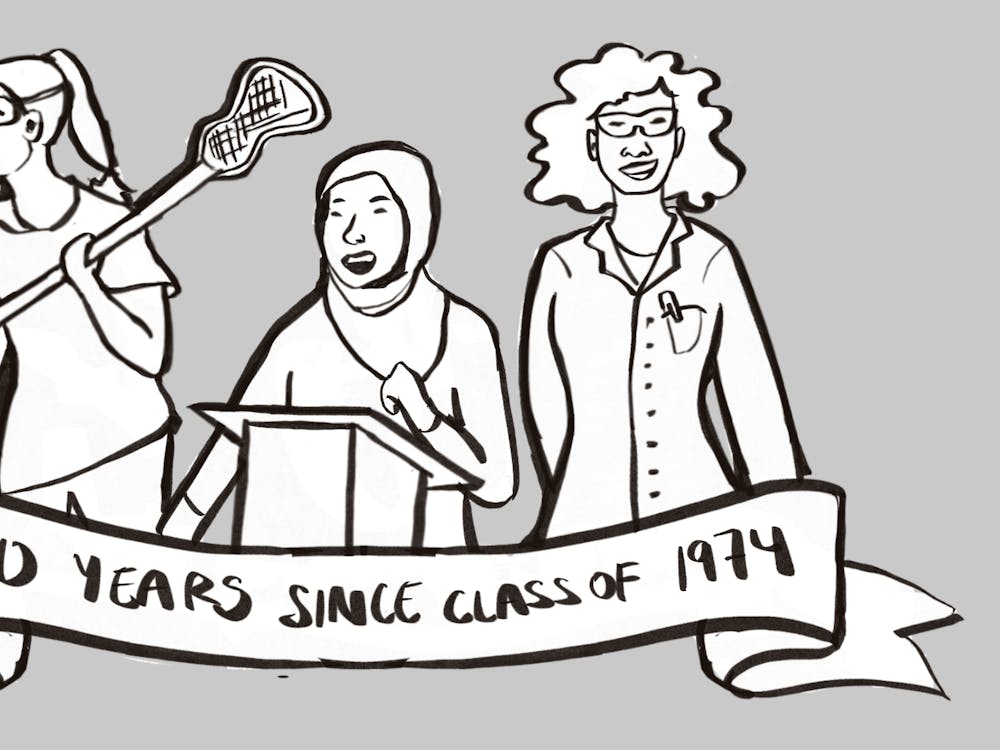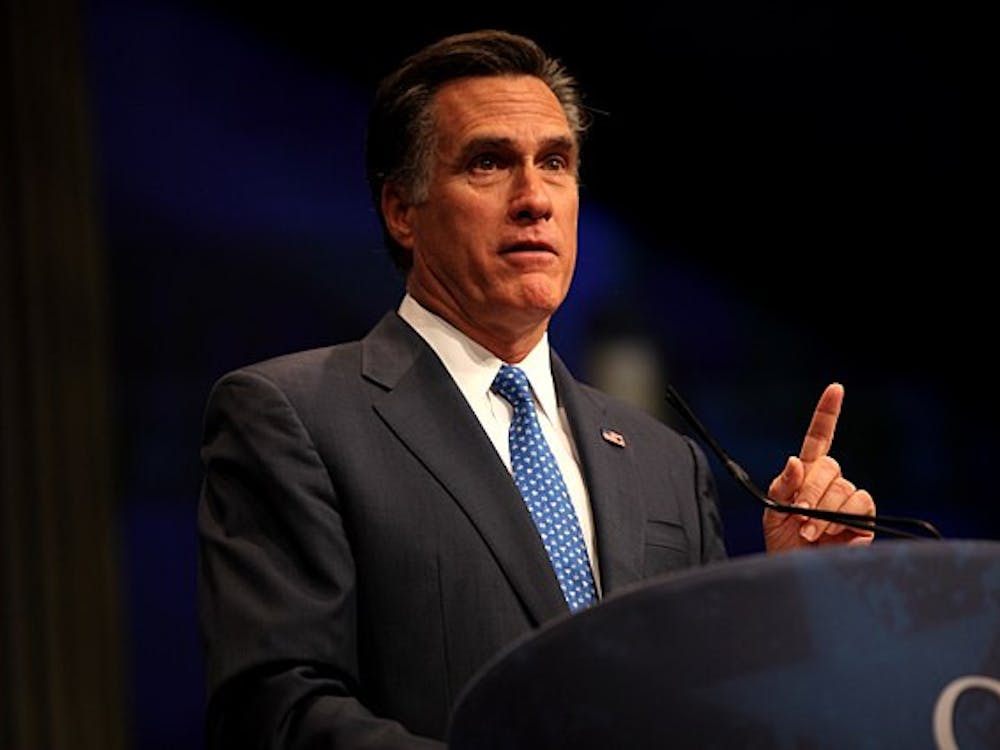As many students in the Hopkins community might be aware of by now, President Daniels and the University administration have been busily engaged in an extensive fundraising campaign called Rising to the Challenge. Begun in early 2010, the initiative aims to raise over 4.5 billion dollars to help fund numerous educational and scholarship programs across the several schools and campuses in the university system. By far the largest fundraising operation in our school’s history, Rising to Challenge recently passed the half way mark to its ultimate goal; with over 160,000 donors contributing thus far, it seems very likely that school officials will reach the 4.5 billion figure by their stated date of Spring 2017.
Hopkins belongs in a very unique category amongst peer institutions because of its extremely intense focus on research at both the graduate and undergraduate levels. In fact, our school received just over 1.8 billion dollars in 2012 in the form of government grants from various federal organizations like Department of Defense and National ScIence Foundation. However, as a result of the recent cuts in national fiscal spending, the University has had to rely less and less on these federal dollars, to the tunes of tens of millions in lost grants—most notably, from the National Institute of Health. To offset these lost federal funds as well as to build on our endowment, the University has opted to turn towards an aggressive solicitation of private donor money.
But with this massive inflow of cash from private donors, there arise several key questions: Who are the individuals—or groups— contributing such large gifts, what do the donors expect in return, and to what extent is the University willing to fulfill those desires?In their November 13 press release, the University disclosed that of the 160,000 or so donors, 28 had decided to contribute gifts exceeding 10 million dollars. Even though this is an extremely large amount of money, nowhere on their campaign website nor in the numerous published articles are the identities of these generous individuals disclosed. This should be a very worrying fact.
As most will agree, a monetary gift of 10 million dollars is not mere pocket change. Furthermore, such a hefty donation carries more than a minuscule say in how it is ultimately spent. Although the campaign’s stated goals include virtuous aims such as “identify[ing] innovative solutions to global health problems” and “bolster[ing] support for faculty and students,” past events have shown that there are sometimes much more meddlesome intentions on the minds of donors. For example, in 1996, Yale alum and Texas billionaire Lee Bass made a 20 million dollar contribution to his alma mater with the slight contingency that the donation be used to create a new ‘Western Civilization’ curriculum, whose professors he would be responsible for selecting. Do Hopkins’ munificent philanthropists seek similar input in return? The question has yet to be answered.
Concurrent with this unprecedented fundraising campaign has been the rumblings of cutbacks in the social sciences and humanities programs through the reduction of full-time tenure professors and PhD candidates, as well administrative overreach in tenure decisions within the Krieger School of Arts and Sciences. With a growing emphasis in higher education on academic disciplines that are able to produce intellectual products immediately usable by industry and corporations, the foundational subjects essential to a vibrant university atmosphere have been ever more scrutinized for possible budgetary trimming.
One of the most established traditions in the university has been the ability of the academic council - composed of faculty from the various departments - to decide who is offered tenure. But at Hopkins this historical custom has recently been under the greater discretion of the President and his administrative faculty, at the expense of University professors who are much more attuned to the academic merit of potential tenure candidates. The dangers of allowing school officials who are in constant contact with external agents to possess heavy influence over which professors are permitted to continue their teaching and research are self-evident. What if the particular tenure candidate is engaged in contentious research whose findings pose significant problems for a rich donor? In an age where academic freedom in the university setting is under unprecedented attack from powerful corporate and private interests, the further erosion of this integral principle leaves very little room for critical debate to occur.
But by far the most ominous strategy that Hopkins is looking to implement is the reduction of full-time tenure professors and the increase in non-tenured associate professors. The current percentage of full-time tenure professors in each department is around 80% of faculty, but under the ‘Deans Strategic Plan’, the University will seek to lower this number to an abysmal 50%. Doing so would allow the increased hiring of non-tenured faculty who demand much less pay, in turn superficially increasing the ratio of professors to undergraduates. While this subterfuge might entice future students to attend the University, its effects on the overall teaching quality are utterly frightening. Furthermore, the kind of groundbreaking and controversial research from marquee professors that Hopkins is renown for will be inhibited; many of the new temporary professors will shy away from publishing material that could ultimately hurt their chances of landing the all-illusive tenure position.
Alongside the planned decrease in full-time tenure faculty is a similar scheme to reduce the number of accepted PhD students. Although the University seeks to increase the stipends paid to these smaller incoming cohorts by 30% to 30,000 dollars per year, this rise does not apply to the current graduate population. So as the already heavy workload of TAs increase each year while the overall graduate population decreases, those unfortunate PhDs who were present when the change went into effect will not see a commensurate rise in their compensation. While the University contends that such a policy would improve the competitiveness of the graduate programs by attracting more talented students, there is a conspicuous dearth of empirical evidence to support the claim.
The general thrust of the ‘Dean’s Strategic Plan’ focuses on concentrating ever more decision-making power in the hands of the President and the Dean’s office, while rescinding the traditional prerogatives of the academic departments. This centralization of power within the expansive bureaucratic web intends to wrestle control away from the professors and faculty who are most in touch with the research, teaching, and learning occurring on campus. Instead, the key choices will be made in a top down fashion that provides little room for input from the individuals who will be most affected by those decisions: students and professors.
Luckily, there is a growing consensus among the targeted departments that such unilateral policies undermine the essence of higher education and must be thoroughly resisted. In support of this resistance, it is crucially imperative that the undergraduate student body at Hopkins — which is forsaken as apathetic by the University administration— also voice their opinion on these monumental policy changes taking place.
Though these coercive structural shifts will be more difficult to defeat than the hidden intersession fee that the administration attempted to push through earlier this semester, collective action amongst the entire student body is our best hope of curtailing these adverse changes.
Sarallah is a sophomore majoring in Math and Political Science.






















Please note All comments are eligible for publication in The News-Letter.